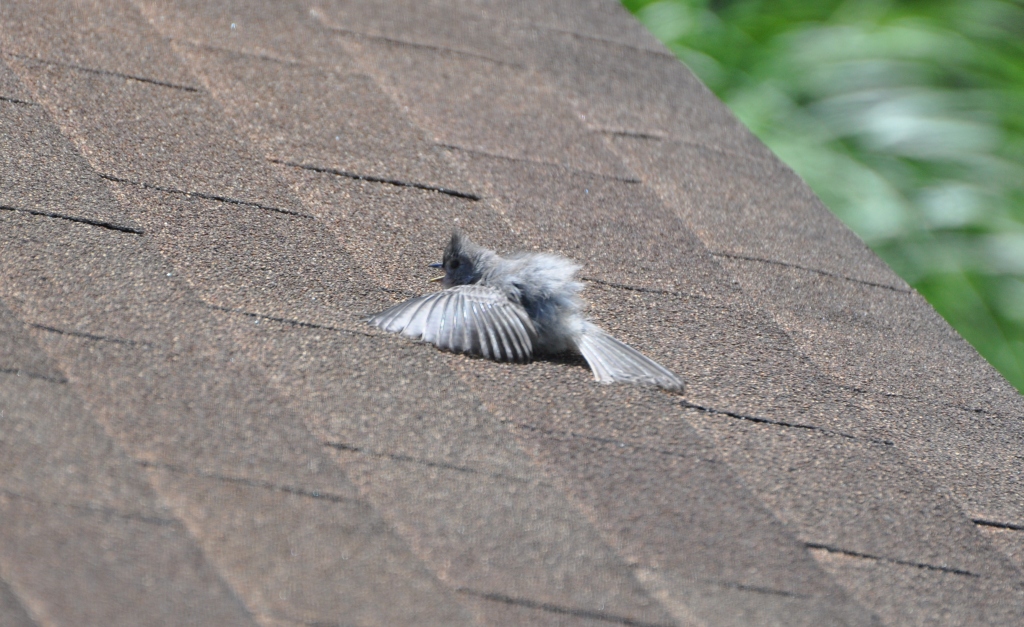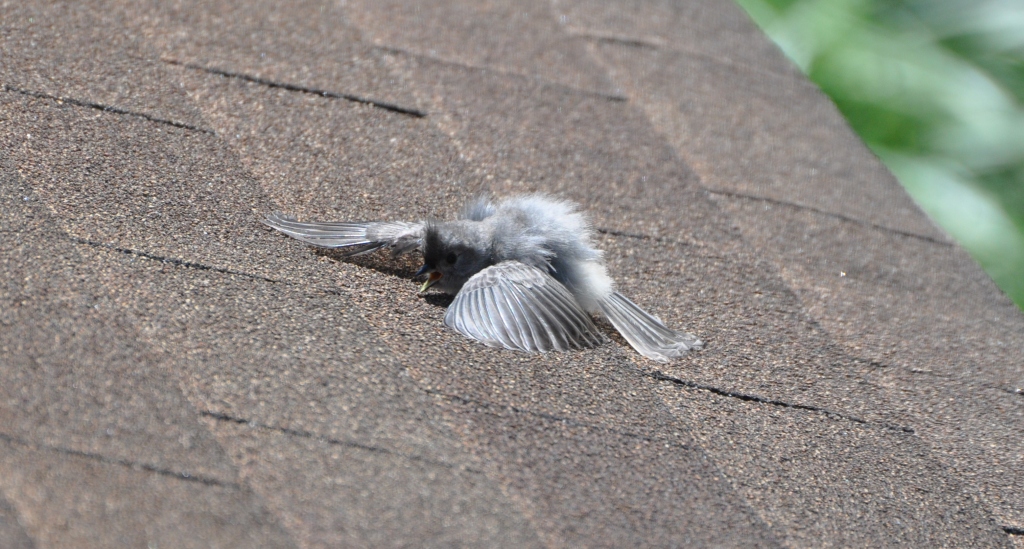
25 June 2021
On Wednesday Bob Donnan emailed me with photos of a tufted titmouse in a very odd posture: “Noticed a bird on the roof of our shed doing this just before lunch. … It seemed fine, since it flew away within a minute after I took these photos.”
On sunny hot days you may see a bird perched or lying flat like this titmouse with its wings spread, feathers fluffed, beak open, and one side of its face turned to the sky. This bird is sunbathing.

For birds sunbathing is more than just warmth and relaxation. Studies have found that the heat kills lice or forces the parasites to move to areas the bird can reach while preening.
This 8-minute video by Lesley the Bird Nerd shows odd postures that birds take while sunning and lists reasons why they do it. I’ve summarized her list below her video in order of importance.
Birds sunbathe …
- To rid their feathers of parasites:
- heat kills lice
- heat makes parasites move to areas easier to reach while preening
- To dry off after bathing or rain
- To warm up on cold days (For example: turkey vultures on cold mornings)
- For vitamin D
- For enjoyment and relaxation
So if you see a bird doing this don’t worry, he’s sunning.
For more information see Hot, Bothered and Parasite Free: Why Birds Sun Themselves.
(photos by Bob Donnan, video from LesleyTheBirdNerd)
It’s always a surprise to see a bird sunbathing. The first time I can remember seeing one was about 15 years ago. At the time, we lived in a house with a steeply pitched area of the roof that came to about 8 ft off the ground. As we were driving up to the house, we saw an immense black bird spread out on that part of the roof. I’m almost positive it was a raven. It looked much bigger than a crow. Just yesterday, we saw a blue jay that appeared to be sunning in the grass on the edge of the woods behind our house.
Kate, Have you seen this it was on Facebook
UPDATE 6/24/2021: due to the rapid spread of the as yet unidentified virus affecting wild birds, the WV Dept of Natural Resources is now asking that all bird feeders and suet feeders be discontinued until further notice in WV. They note that hummingbird feeders are fine to continue to put out. Make sure they are kept clean and the sugar water is fresh.
Starlings, blue jays, robins, grackles and brown-headed cowbirds seem to be taking the biggest hit, although other species are also affected. Symptoms include swollen eyes with a crusty discharge, breathing trouble, blood from the mouth and weakness. Death often seems to come pretty quickly to the affected bird. It seems to be a virus and scientists are scrambling to find out what it is and how to stop it. In the meantime:
*Cease feeding birds until this wildlife mortality event has concluded;
*Clean feeders and bird baths with a 10% bleach solution;
*Avoid handling birds, but wear disposable gloves if handling is necessary; and
*Keep pets away from sick or dead birds as a standard precaution.
*If you see sick or dead birds on your property, please contact your West Virginia Division of Natural Resources or your State wildlife agency district office for further information and instructions.
Yet another lesson learned that I never had any idea!! Thanks, Kate. I hope you have a great weekend!
That was cool. Never knew. Keep the knowledge coming!
Birds. Sunbathing. How cool!